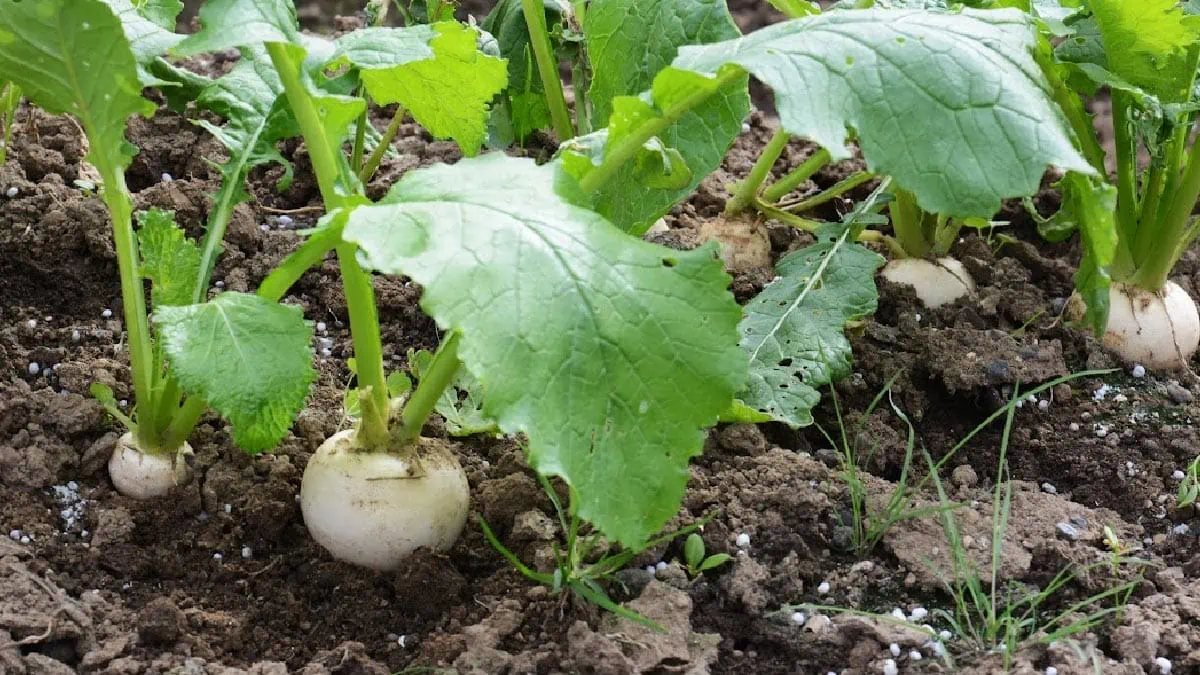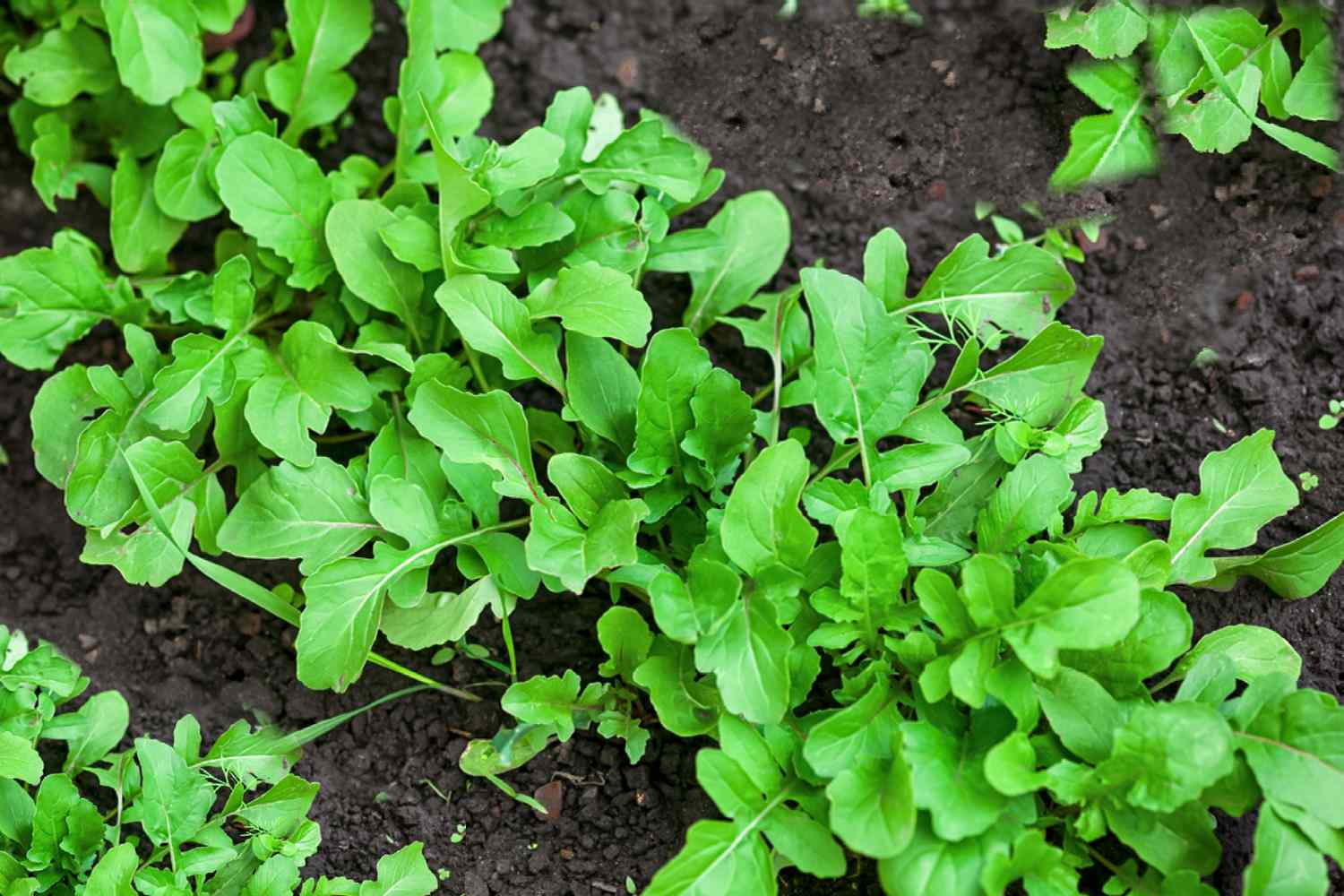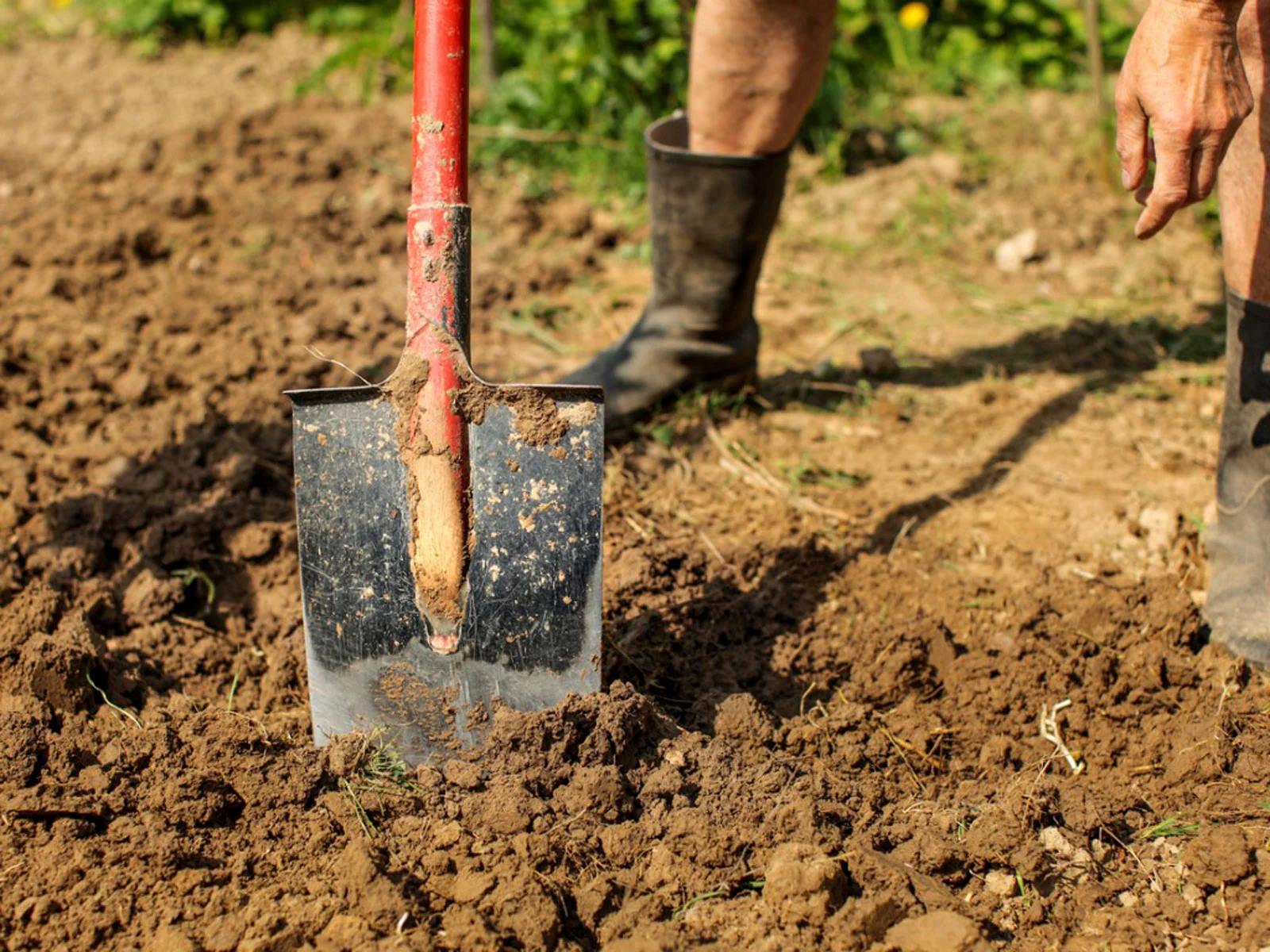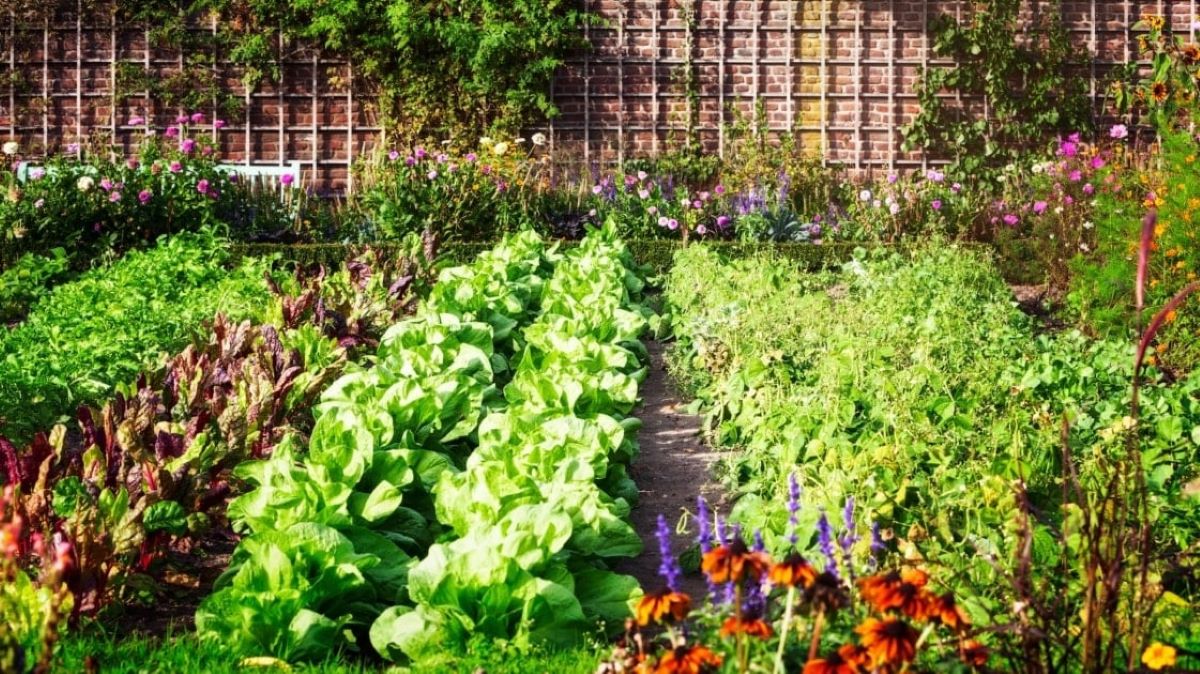Home>Gardening Basics>Understanding Soil>What Vegetables Grow In Clay Soil


Understanding Soil
What Vegetables Grow In Clay Soil
Modified: February 10, 2024
Find out which vegetables thrive in clay soil and get tips for understanding soil composition and improving the quality of your garden soil.
(Many of the links in this article redirect to a specific reviewed product. Your purchase of these products through affiliate links helps to generate commission for Chicagolandgardening.com, at no extra cost. Learn more)
Table of Contents
Introduction
When it comes to gardening, the quality of soil plays a vital role in the success of your plants. One type of soil that many gardeners find challenging to work with is clay soil. While clay soil can be heavy and dense, making it difficult for water and nutrients to penetrate, it also has its advantages. Clay soil tends to be rich in minerals and has excellent water retention capabilities. With the right knowledge and techniques, you can turn your clay soil into a thriving environment for growing vegetables.
In this article, we will explore the world of clay soil gardening and discover the best vegetables that can thrive in such conditions. We will also provide useful tips on how to prepare your clay soil for planting and best practices for growing vegetables in this type of soil.
Understanding the unique properties of clay soil is essential in successfully cultivating vegetables. Clay soil has small particles that tightly bind together, creating a compact texture. This tight structure makes it difficult for water to penetrate, resulting in poor drainage. However, it also means that clay soil has excellent water retention capabilities, which can be advantageous during dry periods when other soil types may dry out faster.
Understanding Clay Soil
Clay soil is characterized by its dense and sticky texture. It is composed of very fine particles that can easily compact, causing drainage issues. The high level of clay particles also contributes to its heavy nature, making it challenging to work with. However, clay soil offers unique advantages that can be leveraged to create a productive vegetable garden.
One of the properties of clay soil is its excellent water retention capabilities. The tightly packed clay particles hold onto moisture, which can be beneficial during dry spells or for plants that require consistent hydration. However, it is crucial to strike a balance as excessive moisture can lead to waterlogging and root rot.
The compact structure of clay soil often leads to poor drainage. When water cannot penetrate the soil effectively, it can result in saturated conditions that are detrimental to plant health. To address this issue, it is important to improve the drainage of clay soil by incorporating organic matter and additives that help break up the dense particles and create space for air and water movement.
Another challenge with clay soil is its tendency to become easily compacted. The heavy nature of clay soil makes it susceptible to compaction caused by foot traffic or heavy machinery. Compacted soil restricts root growth and makes it harder for plants to access nutrients. Regularly aerating the soil and adding compost can help improve its structure and alleviate compaction issues.
Despite the challenges, clay soil has its advantages. It is rich in essential minerals and nutrients that are beneficial for vegetable growth. Additionally, clay soil retains moisture better than other soil types, reducing the frequency of irrigation needed. By understanding the unique properties of clay soil and implementing proper soil management techniques, you can create a productive and thriving vegetable garden.
Best Vegetables for Clay Soil
While clay soil may pose some challenges, there are several vegetables that can thrive in this type of soil. These vegetables have adapted to the dense structure and moisture-retaining properties of clay soil, making them well-suited for cultivation.
1. Potatoes: Potatoes are one of the top choices for clay soil. They require moisture and can benefit from the water-holding capacity of clay. Ensure you plant them in loose soil to allow for tuber expansion.
2. Tomatoes: Tomatoes can tolerate clay soil, but it’s important to amend the soil with organic matter to improve drainage. Planting them in raised beds or containers can also help overcome any drainage issues.
3. Beans: Beans, such as green beans and snap beans, can thrive in clay soil. They are known for their ability to fix nitrogen in the soil, which can enrich the clay and improve its fertility.
4. Cabbage: Cabbage is a hardy vegetable that can withstand heavy clay soil. It prefers a slightly alkaline soil pH, so make sure to adjust the pH level if needed. Adding compost or well-rotted manure to the soil can also enhance its texture.
5. Squash: Squash, including zucchini and butternut squash, can grow well in clay soil. They appreciate the water-holding capacity and can produce bountiful harvests if provided with sufficient nutrients.
6. Kale: Kale is a nutrient-rich leafy green that can tolerate heavy clay soil. It has deep roots that can penetrate the compacted soil and access nutrients. Regularly adding organic matter to the soil can help improve its structure for kale plants.
7. Brussels Sprouts: Brussels sprouts can thrive in clay soil, as they prefer a heavier soil texture. They benefit from well-drained soil, so amending the clay with compost and sand can create a suitable environment for their growth.
8. Onions: Onions can be successfully grown in clay soil, especially if it has good drainage. Adding compost and organic matter to the soil can help improve drainage and create a suitable environment for onion bulbs to develop.
Remember, while these vegetables are well-suited for clay soil, it is still important to prepare the soil properly and provide proper care to ensure optimal growth and yield.
Preparing Clay Soil for Planting
Before planting vegetables in clay soil, it is crucial to prepare the soil to create a favorable environment for plant growth. Taking the time to properly amend and condition the soil will help improve drainage, fertility, and texture. Follow these steps to prepare clay soil for planting:
1. Test the soil: Start by testing the pH level and fertility of your clay soil. This will provide valuable information on any adjustments needed to create an optimal growing environment for your vegetables.
2. Amend with organic matter: Adding organic matter, such as compost, well-rotted manure, or leaf mold, is essential for improving the structure of clay soil. Organic matter helps break up compacted soil, improve drainage, and increase nutrient availability.
3. Incorporate sand or grit: Clay soil can benefit from the addition of sand or grit to improve drainage. However, it is important to note that adding too much sand can lead to the formation of a dense, cement-like structure. Aim to add a small amount of sand or grit to create a more workable soil texture.
4. Use cover crops: Planting cover crops like clover, vetch, or ryegrass during the off-season can help improve clay soil. These crops provide organic matter when tilled or mulched into the soil, enhancing its fertility and structure.
5. Rotate crops: Practicing crop rotation can help prevent the depletion of nutrients in clay soil. By alternating vegetable plantings each season, you can help maintain soil fertility and reduce the risk of diseases and pests.
6. Mulch the soil: Applying a layer of organic mulch, such as straw or wood chips, around your vegetable plants helps regulate soil temperature, retain moisture, and prevent weeds. Mulching also gradually breaks down, adding additional organic matter to the soil over time.
7. Regularly monitor and adjust: It is important to consistently monitor the moisture levels of clay soil and adjust watering accordingly. Overwatering can lead to waterlogged conditions, while underwatering can cause stress to plants. Aim to keep the soil moist but not saturated.
By following these steps and implementing proper soil preparation techniques, you can transform your clay soil into a fertile and productive growing medium for your vegetables.
Tips for Growing Vegetables in Clay Soil
Gardening in clay soil can present some unique challenges, but with the right approach, you can still achieve successful vegetable cultivation. Here are some tips to help you grow vegetables in clay soil:
1. Choose the right varieties: Select vegetable varieties that are known to adapt well to clay soil. These varieties are often labeled as being “heavy soil tolerant” or “clay soil tolerant” and have been specifically bred to thrive in dense and compact soil.
2. Practice proper watering: Clay soil retains moisture well, so be mindful not to overwater your vegetables. Water deeply, but infrequently, allowing the soil to dry out slightly between waterings. This will prevent waterlogging and encourage plants to develop deep root systems.
3. Mulch your garden beds: Apply a layer of organic mulch, such as straw or wood chips, around your vegetable plants to help regulate soil temperature and retain moisture. Mulching also helps prevent soil compaction caused by heavy rainfall.
4. Avoid working with wet soil: Working with wet clay soil can lead to compaction and the creation of hard clumps. Wait until the soil is slightly dry before planting or performing any soil amendments to ensure it is workable.
5. Implement raised beds or containers: Consider growing your vegetables in raised beds or containers filled with a mixture of loam soil, compost, and sand. This will provide better drainage and prevent your plants’ roots from being in direct contact with the clay soil.
6. Add organic matter regularly: Continuously incorporate organic matter into your clay soil to improve its structure over time. This helps create air pockets, enhance drainage, and increase the soil’s fertility.
7. Rotate your crops: Practicing crop rotation in clay soil is essential to prevent nutrient deficiencies and the buildup of pests and diseases. Rotate your vegetable crops each season to maintain soil health and promote balanced growth.
8. Enrich with nutrients: Clay soil tends to be nutrient-rich, but it may lack specific elements. Conduct regular soil tests to identify any nutrient deficiencies and amend the soil accordingly with organic fertilizers or compost.
9. Protect your soil: Avoid excessive tilling and unnecessary foot traffic in your garden beds to prevent the compaction of clay soil. Compacted soil restricts root growth and hampers water and nutrient absorption.
10. Monitor for pests and diseases: Clay soil can retain moisture, which can create favorable conditions for certain pests and diseases. Regularly inspect your plants for signs of issues and take preventive measures, such as proper spacing and adequate airflow, to minimize the risk.
By following these tips and adapting your gardening practices to suit clay soil, you can overcome its challenges and enjoy a bountiful harvest of vegetables.
Conclusion
While growing vegetables in clay soil may require extra effort and attention, it is definitely possible to achieve fruitful results. By understanding the unique properties and challenges of clay soil, you can implement specific strategies to create an ideal growing environment for your vegetables. From selecting the right varieties to improving soil structure and implementing proper watering techniques, each step plays a crucial role in the success of your garden.
Remember to test your soil, amend it with organic matter, and incorporate suitable techniques such as mulching, crop rotation, and proper watering practices. It’s important to adjust your gardening methods according to the specific needs of your plants and monitor their progress regularly.
By embracing the rewards that clay soil can offer, such as excellent nutrient retention and water-holding capacity, you can cultivate a thriving vegetable garden. With patience, persistence, and a little bit of experimentation, you can transform your clay soil into a fertile ground that produces abundant and healthy crops for years to come.
So, roll up your sleeves, gather your gardening tools, and embark on the journey of growing vegetables in clay soil. Your perseverance will be rewarded with a bountiful harvest that showcases the wonders of nature and your own green thumb.







